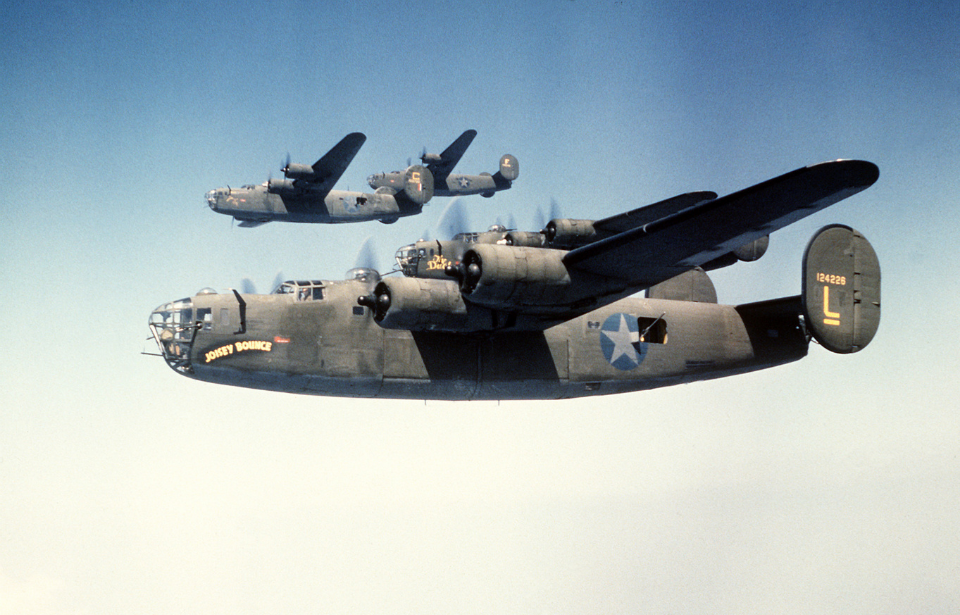A team has gathered in Sussex, England, to recover the bodies of two airmen who were lost in a violent crash in the British countryside in 1944. The men were inside a Consolidated B-24 Liberator bomber that had been damaged during a mission over Europe. After limping most of the way home, it suddenly crashed on friendly soil — the exact reason is still a mystery today. A four-week dig started on June 22nd to excavate the wreckage and recover the remains so they can be repatriated home.
The recovery project is a joint effort by archaeologists from the University of York, American Veterans Archaeological Recovery (AVAR), and the American Defense POW/MIA Accounting Agency (DPAA). The beginning of the dig was marked by a flypast of three Spitfires in honor of the missing men.
Although the wreckage of the aircraft is being excavated, the main goal for the project is to recover the airmen who have been missing for 77 years.
Dr. Stephen Humphreys, AVAR’s chief executive and a researcher at the University of York’s Department of Archaeology said, “Our mission is to recover the remains of those service members who were lost when this aircraft crashed, and hopefully give some closure to some families if we can.”
Johnny Reb’s crash
The B-24, nicknamed “Johnny Reb,” was part of the 489th Bombardment Group and was damaged by German anti-aircraft fire while bombing an airfield near Versailles. The damage severed most of the pilots’ control over the aircraft, but in what some have called a “tremendous feat of airmanship,” they managed to nurse the bomber home in the safety of the bomber stream.
After crossing the English Channel, the pilot ordered the crew of 10 to bail out, but only seven were able to do so. With three men still on board, the aircraft suddenly entered a steep dive and crashed into a Sussex field. Farmer John Sellers witnessed the crash when he was a young boy, and still vividly remembers the event.
“At about 9pm I had started to get ready for bed when there was a thunderous scream of a plane in a power dive then bump of it hitting the ground.” Sellers said. “Once it was safe I took the first chance to inspect the crash site. I found that the plane had come down near vertically, the wings at about 45 degrees to the ditch and fence.”
One of the three crewmen aboard was recovered and repatriated, but the other two were left and still remain there today.
Due to the extremely violent crash, much of the aircraft was disintegrated on impact, but that doesn’t mean the team cannot recover the airmen’s remains.
AVAR is providing archaeological experience
Humphreys said, “So obviously this is a fairly traumatic crash site but still there will be human material and human remains that survive so that is what we are attempting to recover.
“And personal effects, a number of items that would have been carried by those airmen at the time, those can help us to pinpoint where in the wreckage we might be able to find those remains.
“It’s all about making the details of the excavation as precise as we possibly can so that we can be as precise as we need to be in terms of being able to say where those individual finds came from out of the ground while we’re looking for those airmen.”
The process of recovering the remains involves using an excavator to carefully remove sections of soil and place it on corresponding tarpaulins. This soil is then rigorously examined for any remains. If some are found, the area that soil was removed from is inspected further.
The crash site excavation is part of Operation Keeping Faith, a joint project by the DPAA and AVAR. AVAR gives veterans the opportunity to help on archaeological digs for either personal reasons or as a career move.
More from us: The Real-Life Aircraft And Battles That Inspired ‘Star Wars’
“On my team we have the full range of individuals from people who are veterans and who want to go out and do something cool and learn a new skill set, but we also have veterans who already have degrees in archaeology and who do this as a career and of course this is great training for them in the pursuit of that career,” Humphreys said.
